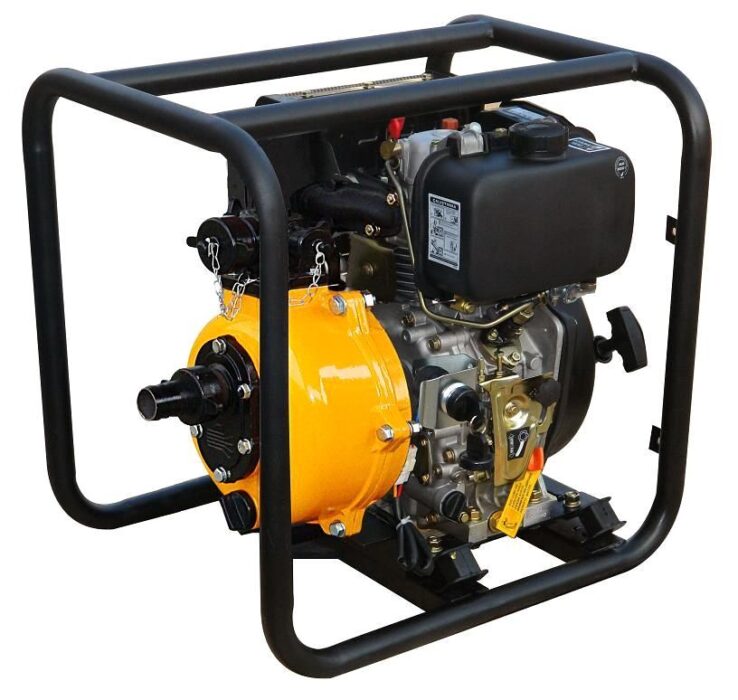
Water Pump Prices In Kenya
Water pump prices in Kenya for irrigation by Grekkon Limited are determined by;
- Source of power types; solar, electric, diesel, and petrol
- Positioning; surface, or submersible
- Pressure rating; high, medium, and low pressure water pumps
- Flow rate; high volume, and low volume
Water Pump Prices in Kenya Tabulations
1. Solar submersible pump prices
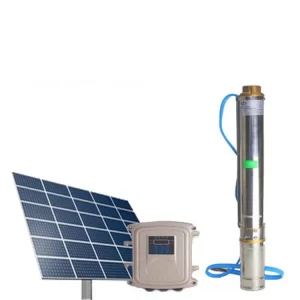
| Model No | Power Hp | Watts | No & Panel Size | Head (M) | Flow rate (liters/ hour) | Price in Kes |
| SP 0.5N | 0.6 | 700 | 300W x 1pc | 40M | 5,800 | 37,120 |
| SP 0.6N | 0.8 | 1,200 | 300W x 2pcs | 60M | 5,800 | 40,215 |
| SP 0.8N | 1.1 | 1,300 | 300W x 3pcs | 70M | 5,800 | 46,400 |
| SP 1.0N | 1.3 | 1,400 | 300W x 3pcs | 80M | 5,800 | 52,600 |
8
2. Electric surface pump prices
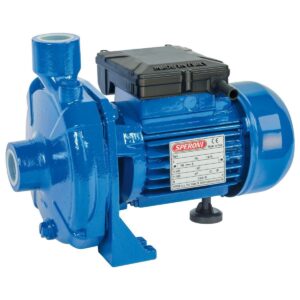
| Model No | Power Kw-Hp | Head (M) | Flow rate (liters/ min) | Inlet/ Outlet size in Inches | Motor Phase | Price in Kes |
| i. Single impeller centrifugal pumps | ||||||
| CM 32 | 0.75 – 1 | 32 | 120 | 1 | Single | 13,570 |
| CM 35 | 1.1 – 1.5 | 35 | 140 | 1 | Single | 27,142 |
| CM 45 | 1.5 – 2 | 45 | 160 | 1-1/4 / 1 | Single | 33,570 |
| CBM 303/B | 2.2 – 3 | 17.4 | 1,000 | 3 | Single | 67,140 |
| ii. Twin impeller centrifugal pumps | ||||||
| 2CM 25/160A | 2.2 – 3 | 65 | 160 | 1-1/4 / 1 | Single | 75,715 |
| 2C 25/160A | 2.2 – 3 | 65 | 160 | 1-1/4 / 1 | Three | 84,285 |
| 2C 32/210C | 5.5 – 7.5 | 90 | 300 | 1-1/4 | Three | 138,570 |
| iii. Monoblock centrifugal pumps | ||||||
| CS 32-200C | 4 – 5.5 | 40.7 | 600 | 1-1/2 / 1-1/4 | Three | 104,285 |
| CS 32-200B | 5.5 – 7.5 | 55.7 | 600 | 1-1/2 – 1 | Three | 131,430 |
3. Electric submersible pump prices

| Model No | Power Hp | Head (M) | Flow rate (liters/ hour) | Price in Kes |
| DW 1050 | 0.5 | 34 | 3,000 | 18,000 |
| DW 1100 | 1 | 67 | 2,500 | 20,800 |
| DW 1150 | 1.5 | 81 | 3,000 | 27,900 |
| DW 2000 | 2 | 108 | 3,000 | 35,000 |
| SBH 1050 | 0.5 | 54 | 3,000 | 23,000 |
| SBH 1100 | 1 | 95 | 2,500 | 25,000 |
| SBH 1500 | 1.5 | 128 | 4,500 | 36,500 |
| SBH 2000 | 2 | 168 | 4,500 | 43,800 |
| SBH 3000 | 3 | 237 | 4,500 | 56,500 |
| SBH 4000 | 4 | 270 | 4,500 | 70,000 |
| SBH 4000-3 | 4 | 304 | 4,500 | 82,200 |
4. Diesel water pump prices
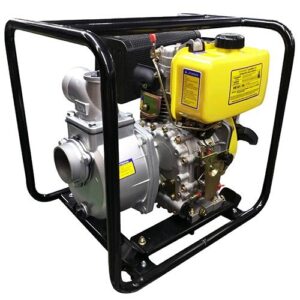
| Model | Specs; head, flow rate, outlet size, and horsepower | Price in KES |
| AICO | 60M, 40 cubic per hour, 3″ and 10Hp | KES 77,000 |
| Stallion | 75M, 39 cubic per hour, 3″ and 14Hp | KES 80,000 |
| Carltons UK | 85M, 45 cubic per hour, 3″ and 14Hp | KES 80,000 |
| Power Italia | 95M, 39 cubic per hour, 3′ and 14Hp | KES 85,000 |
| Lifan | 84M, 41 cubic per hour, 3″ and 16Hp | KES 85,000 |
| Power Italia | 55M, 120 cubic per hour, 4″ and 16Hp | KES 95,000 |
5. Petrol water pump prices
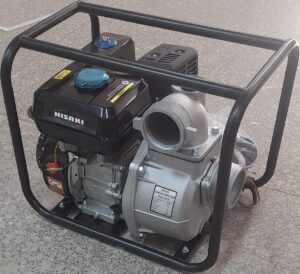
5.1. High pressure models. These work well with rain-gun sprinkler systems
| Model | Specs; head, flow rate, and horsepower | Price in KES |
| Lifan | 60M, 37.8 cubic per hour and 7.5Hp | KES 32,000 |
| Carltons UK | 60M, 37.8 cubic per hour and 8.5Hp | KES 35,000 |
| AICO | 75M, 20 cubic per hour and 7Hp | KES 35,000 |
| Hisaki | 90M, 30 cubic per hour and 7Hp | KES 35,000 |
| AstraMilano | 90M, 36 cubic per hour and 7Hp | KES 35,000 |
| Power Italia | 120M, 30 cubic per hour and 13Hp | KES 70,000 |
5.2. Low pressure models. They work well with rain hose kits
| Model | Specs; head, flow rate, and horsepower | Price in KES |
| Daishin Honda | 32M, 60 cubic per hour and 7Hp | KES 32,000 |
| KATO | 48M, 36 cubic per hour and 6.5Hp | KES 18,000 |
| AICO | 25M, 45 cubic per hour and 7Hp | KES 18,000 |
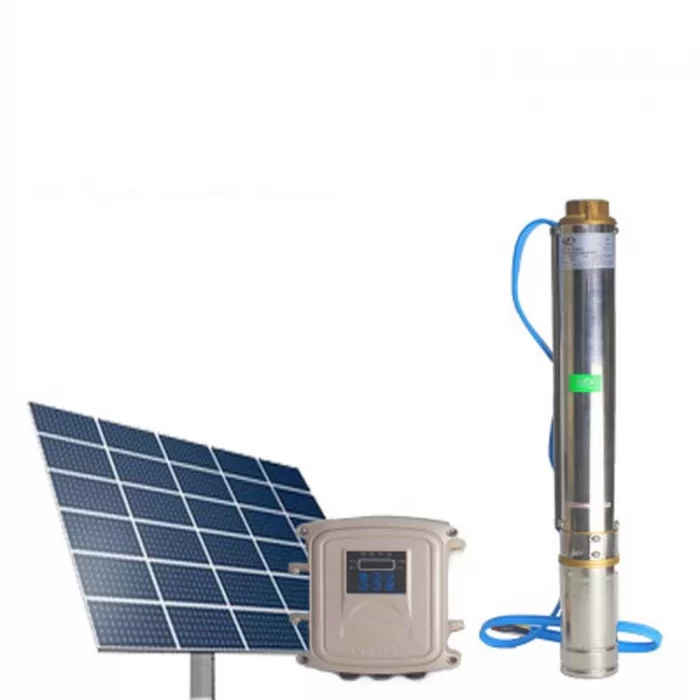
Solar Pump Prices In Kenya
Grekkon Limited’s solar pump prices in Kenya for shallow wells and boreholes are determined from test pumping results. Being a top solar water pump suppliers in Kenya, every pump is unique. This is in it’s power rating, head, and flow rate. Our solar water pumps for agriculture under irrigation are available in our branches countrywide.
- Power rating. This is the motor kilowatts (kW) or horsepower (Hp)
- Head. This is the maximum vertical height the solar water pump will push water. It is inversely related to the flow rate
- Flow rate. The amount of water the water pump evacuates per given time. This is indicated as; per second, minute, or hour
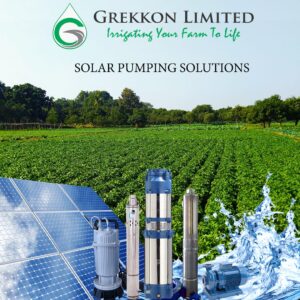
Solar Pump Prices in Kenya Tabulation
Below is the cost of solar pump prices in Kenya. For shallow wells (less than 80M deep), with low flow rates (less than 6 liters cubic per hour).
| Model No | Power Hp | Watts | No & Panel Size | Head (M) | Flow rate (liters/ hour) | Price in Kes |
| SP 0.5N | 0.6 | 700 | 300W x 1pc | 40M | 5,800 | 37,120 |
| SP 0.6N | 0.8 | 1,200 | 300W x 2pcs | 60M | 5,800 | 40,215 |
| SP 0.8N | 1.1 | 1,300 | 300W x 3pcs | 70M | 5,800 | 46,400 |
| SP 1.0N | 1.3 | 1,400 | 300W x 3pcs | 80M | 5,800 | 52,600 |
A borehole solar water pump in Kenya’s price is from the test pumping results.
Every solar water pump in Kenya by our technical team is aligned to the power wattage, and water level. This ensures efficiency and maximum longevity. We provide a one year warranty with each pump, and a detailed operational manual.
Our submersible DC solar pumps work with photo-voltaic cells solar panels for both deep well, and shallow wells. Each solar cell has two or more specially prepared layers of semiconductor material that produce direct current (DC) electricity. This DC current is collected by the wiring in the panel. It is then supplied either to a DC pump, which in turn pumps water. Photovoltaic (PV) systems have a high input cost. It has many features which make it attractive as an alternative source of power. It is clean, as it produces no carbon emission. There is no noise generation, and it has low operational and maintenance cost

Submersible Water Pump Prices
Our submersible water pump prices in Kenya are for 2 types of submersible water pumps. Solar water pumps, and electric water pumps. Solar water pumps are powered by sunlight and are ideal for off-grid electricity locations. Electric water pumps are connected to the power grid. Grekkon Limited installs both pump types across east Africa
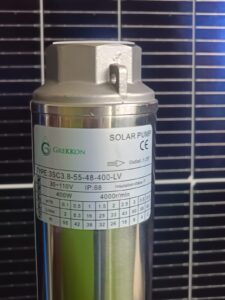
A Grekkon solar submersible water pump for smallholder farmers
Similarities Between Solar, and Electric Submersible Pumps
- they both work under water
- each has an electric motor to power it
- they both use an electric current
Difference Between Solar, and Electric Submersible Water Pumps
- solar pumps use direct current (DC), electric pumps use alternating current
- electric pumps motors are further categorised as single or 3 phase. This does not apply to solar pumps
- with an inverter to change current from DC to AC, an electric pump’s motor will run on solar panels
- solar pumps are more expensive for the same specs as electric pumps
- solar pumps will require denser cables for the same specs as electric pumps
- electric pumps are more expensive in the long-term because of power bills. The running cost of a solar pumps is negligible
- some smaller solar pumps can be battery powered directly in the absence of sunlight
1. Solar water pump prices in Kenya
| Model No | Power Hp | Watts | No & Panel Size | Head (M) | Flow rate (liters/ hour) | Price in Kes |
| SP 0.5N | 0.6 | 700 | 300W x 1pc | 40M | 5,800 | 37,120 |
| SP 0.6N | 0.8 | 1,200 | 300W x 2pcs | 60M | 5,800 | 40,215 |
| SP 0.8N | 1.1 | 1,300 | 300W x 3pcs | 70M | 5,800 | 46,400 |
| SP 1.0N | 1.3 | 1,400 | 300W x 3pcs | 80M | 5,800 | 52,600 |
Additional costs to the solar water pumps is that of panels, and cabling. For deeper wells, specific borehole water pumps are quoted for according to the borehole water specs
2. Electric submersible water pump prices in Kenya
| Model No | Power Hp | Head (M) | Flow rate (liters/ hour) | Price in Kes |
| DW 1050 | 0.5 | 34 | 3,000 | 18,000 |
| DW 1100 | 1 | 67 | 2,500 | 20,800 |
| DW 1150 | 1.5 | 81 | 3,000 | 27,900 |
| DW 2,000 | 2 | 108 | 3,000 | 35,000 |
| SBH 1,050 | 0.5 | 54 | 3,000 | 23,000 |
| SBH 1,100 | 1 | 95 | 2,500 | 25,000 |
| SBH 1500 | 1.5 | 128 | 4,500 | 36,500 |
| SBH 2,000 | 2 | 168 | 4,500 | 43,800 |
| SBH 3,000 | 3 | 237 | 4,500 | 56,500 |
| SBH 4,000 | 4 | 270 | 4,500 | 70,000 |
| SBH 4,000-3 | 4 | 304 | 4,500 | 82,200 |
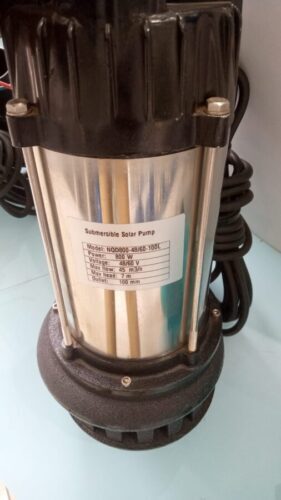
Electric Water Pump Prices
Electric water pump prices by Grekkon Limited are provided for both surface electric water pumps, and electric submersible water pumps.
Similarities Between surface, and Submersible Electric Water Pumps
- both use alternating (AC) current
- both have electric motors to power the pump
- each either works with single or 3-phase power depending on the motor size
- each has domestic use, and commercial irrigation use models
- both are centrifugal pumps
- both categories have sewage pumps
Differences Between Surface, and Submersible Electric Water Pumps
- surface electric pumps only work outside of water
- submersible electric water pumps only work inside water
- submersible electric pumps are made of stainless steel
- a surface electric pump’s body is made of cast iron
- there are booster pumps as electric surface pumps. There is no such for submersible electric pumps
Electric Water Pump Prices In Kenya
1. Surface Electric Pumps Prices
| Model No | Power Kw-Hp | Head (M) | Flow rate (liters/ min) | Inlet/ Outlet size in Inches | Motor Phase | Price in Kes |
| 1. Single impeller centrifugal pumps | ||||||
| CM 32 | 0.75 – 1 | 32 | 120 | 1 | Single | 13,570 |
| CM 35 | 1.1 – 1.5 | 35 | 140 | 1 | Single | 27,142 |
| CM 45 | 1.5 – 2 | 45 | 160 | 1-1/4 / 1 | Single | 33,570 |
| CBM 303/B | 2.2 – 3 | 17.4 | 1,000 | 3 | Single | 67,140 |
| 2. Twin impeller centrifugal pumps | ||||||
| 2CM 25/160A | 2.2 – 3 | 65 | 160 | 1-1/4 / 1 | Single | 75,715 |
| 2C 25/160A | 2.2 – 3 | 65 | 160 | 1-1/4 / 1 | Three | 84,285 |
| 2C 32/210C | 5.5 – 7.5 | 90 | 300 | 1-1/4-1 | Three | 138,570 |
| 3. Mono-block centrifugal pumps | ||||||
| CS 32-200C | 4 – 5.5 | 40.7 | 600 | 1-1/2 / 1-1/4 | Three | 104,285 |
| CS 32-200B | 5.5 – 7.5 | 55.7 | 600 | 1-1/2 – 1 | Three | 131,430 |
Electric booster pumps have 0.5Hp to 0.75Hp with an outlet pipe size of 1″. They are for domestic use such as to provide in-house or gardening water. The choice of the pump depends on the scale of use, and the amount of water available.
2. Submersible Electric Water Pump Prices
| Model No | Power Hp | Head (M) | Flow rate (liters/ hour) | Price in Kes |
| DW 1050 | 0.5 | 34 | 3,000 | 18,000 |
| DW 1100 | 1 | 67 | 2,500 | 20,800 |
| DW 1150 | 1.5 | 81 | 3,000 | 27,900 |
| DW 2000 | 2 | 108 | 3,000 | 35,000 |
| SBH 1050 | 0.5 | 54 | 3,000 | 23,000 |
| SBH 1100 | 1 | 95 | 2,500 | 25,000 |
| SBH 1500 | 1.5 | 128 | 4,500 | 36,500 |
| SBH 2000 | 2 | 168 | 4,500 | 43,800 |
| SBH 3000 | 3 | 237 | 4,500 | 56,500 |
| SBH 4000 | 4 | 270 | 4,500 | 70,000 |
| SBH 4000-3 | 4 | 304 | 4,500 | 82,200 |
We install these pumps across E. Africa. In all submersible pumps installations, we provide a floater, and a control box.
In commercial installations, our technical team advices on the right pump to use always.
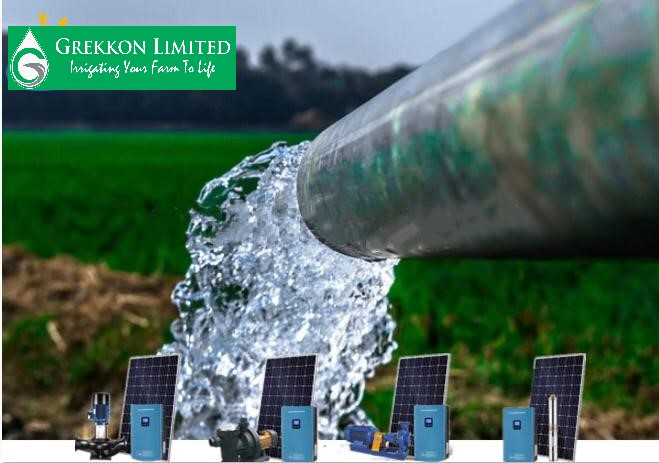
Solar Water Pumps For Agriculture
Grekkon Limited’s solar water pumps for agriculture have different specifications in pressure rating (head), flow rate, and the motor size (Megawatts). Our solar water pumps for irrigation in Kenya range from small portable to large immobile units
The choice of a farmer’s solar water pump is a factor of acreage because, the area under irrigation determines the water use Our solar water pumps prices are tailored to the well’s depth, yield and head. These solar pump’s costs range from as low as Kes 37,000 to over Kes 1,500,000. For instance, a farmer with a 6M shallow well yielding 0.5 cubic litres an hour will work with a basic solar water pump. Another grower with a deep well of 280M, and a yield of 15 cubic litres per hour will have a large pump installed
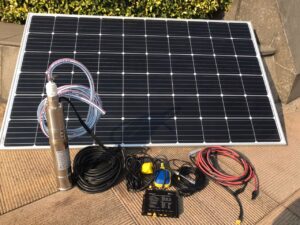
A simple to assemble solar submersible water pump kit for shallow wells
Types Of Solar Water Pumps For Agriculture
1. Submersible water pumps
These are the most common ones with farmers installing them in deep or shallow wells. They are also done in rivers and pools. They work when fully immersed in water. Stainless steel submersible solar water pumps are common in every well. There is a more efficient and affordable plastic version. This is for rivers, pools, and water tanks. It works with the same principle as the stainless steel one
Submersible solar water pumps for agriculture prices
Our solar water pumps prices range from as low as Kes 38,000 for small portable units, to over Kes 2,000,000 for large types. The former have a low head, and low water flow rate. The latter is for very deep wells and with lots of water
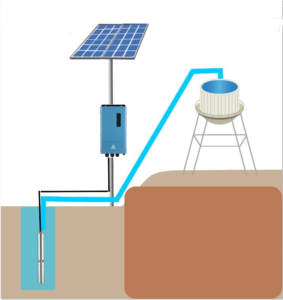
A graphic illustration of a stainless steel solar submersible water pump in a well installation
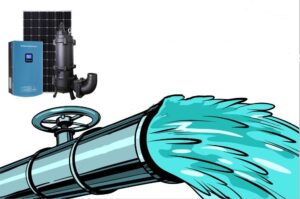
A plastic submersible solar water pump designed for rivers. pools and tanks
To recommend and price your right submersible solar water pump, a test pumping report is required. It will show; the well depth, the dynamic head, the static water level, and the pump placement level is necessary. Where such is lacking, then a float switch attached to the water pump is necessary. It ensures that it only works when submerged in water. The motor is damaged when the water pump runs ‘dry’
2. Surface solar water pumps
These solar surface water pumps work without any external contact with water unlike their submersible type counterparts. They are easily portable unless it’s too large to move about.

A solar surface water pump
3. Direct current (DC) water pumps
These are purely solar water pumps that work under a DC current. They will not require an inverter, unless a farmer chooses to install one. This is to modify it to use an alternating current (AC)
4. Alternating current water pumps
These are purely electric water pumps that work under an AC current. To convert it to a solar water pump, an inverter converts the DC to AC. The DC is from the solar panels
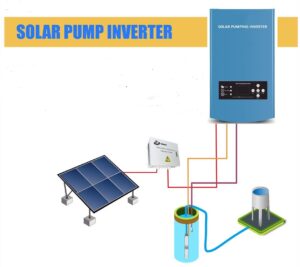
A illustration of a solar water pump inverter showing how it connects the entire system
Submersible solar water pump prices in Kenya
Solar water pump for irrigation prices (submersibles for shallow, low volume wells below 100M)
| Model No | Power (Hp) | Watts | No & Panel Size | Head (M) | Flow rate (liters/ hour) | Price in Kes |
| SP 0.5N | 0.6 | 700 | 300W x 1pc | 40M | 5,800 | 37,120 |
| SP 0.6N | 0.8 | 1,200 | 300W x 2pcs | 60M | 5,800 | 40,215 |
| SP 0.8N | 1.1 | 1,300 | 300W x 3pcs | 70M | 5,800 | 46,400 |
| SP 1.0N | 1.3 | 1,400 | 300W x 3pcs | 80M | 5,800 | 52,600 |
For solar submersible water pumps for deep well below 80M, we provided tailored units based on the test pumping results of the borehole
Solar-powered water pumps FAQs
I. How much is solar water pump in Kenya?
The solar water pump price depends on the features listed above; power rating, head, and flow rate. It can be a low-cost solar water pump that costs Kes 15,000, and or a borehole solar water pump as much as Kes 1,500,000
Solar pump prices are varied according to this
II. How much is a solar panel in Kenya?
Our price is Kes 50 per watt
III. What is a DC water pump?
A direct current water pump is one that uses a direct current from a solar panel or battery to push irrigation water
IV. Do you sell any portable solar water pump in Kenya?
Yes our shallow well solar water pumps are portable
V. Is it a low-volume high-pressure water pump?
Not all. Some of our submersible solar water pumps are high volume high-pressure water pumps. They have a high water flow rate. Most are high volume high-pressure pumps with a high water flow rate
VI. What is the best solar-powered water pump?
It depends on the individual’s use
VII. How does a solar pump work?
Solar energy from the sun is received on the panels. This energy as a direct current is fed to the motor to pump out the water
VIII. Do solar pumps work at night?
No, they don’t, unless powered by an external battery
IX. Which solar pump is the best?
To determine the most appropriate submersible solar water pump for a client, the following information will be provided
- Depth of the well or borehole
- The water level in the well or borehole
- Water requirement or use per day
X. What are the disadvantages of solar water pumping?
- The initial set up cost is expensive
- If placed in an insecure location, the risk of theft is high
- It does not pump at night or when it gets very cloudy
XI. Can I connect a pump directly to a solar panel?
No you cannot because all connections origination from the panel or the pump has to go through the control unit
JD Diesel Water Pumps
JD (Jiang dong) diesel water pumps in Kenya by Grekkon Limited are of varying specifications for agricultural use in irrigation. This specifications are in regards to; the engine power, the head, and the flow rate
Our JD diesel water pumps consist of a diesel engine, and a horizontal single-suction, single-stage, centrifugal water pump. The water pump is made from cast iron
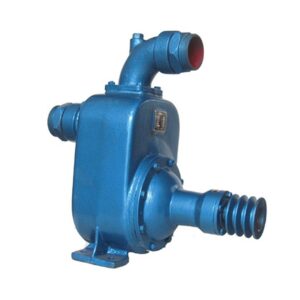
The water pump. It is rated by inlet/ outlet pipe size, head, and flow rate
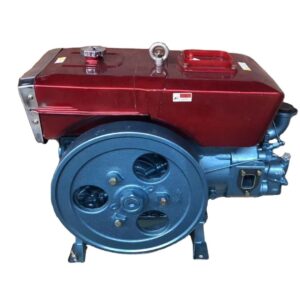
The engine. It is rated in horsepower (Hp). The higher the HP, the more powerful it is
JD Diesel Water Pumps Characteristics
- high efficiency
- wide performance range
- safe and stable operation
- long service life because the cast iron impeller and volute reduce vibration and wear on the mechanical seal and engine
- convenient installation and maintenance
- can channel hot water, abrasive or corrosive liquids by changing the material of the water pump’s flow-through components, the form of the seal and adding a cooling system
Working Principal
After the start, the impeller rotates rapidly so that the water in the impeller channel flows towards the volute. During this time, a vacuum is formed in the inlet, and water flows from the suction pipe to the pump through the impeller channel
The right most critical terms when identifying the right pump performance is water volume and the lift/ head. Generally, a trade -off occurs between head and flow with an increase in one causing a decrease in the other and vice versa. Head refers to the gains or losses in pressure caused by gravity and friction as flows through the system. The lift is the vertical distance from the water line to the center line of the impeller
The greater the lift and the water volume required, the larger the engine power. For instance, to achieve a flow rate of 80 cubic litres per hour, at a head of 100M, then the engine power must be from 22Hp and above
JD Diesel Water Pumps Prices
| Model | Specs; head, flow rate, outlet size, and horsepower | Price in KES |
| JD | 65M, 38cubic per hour, 2″ and 14Hp | KES 113,000 |
| JD | 65M, 38cubic per hour, 2″ and 16Hp | KES 116,000 |
| JD | 65M, 38cubic per hour, 2″ and 18Hp | KES 129,000 |
| JD | 65M, 38cubic per hour, 2″ and 22Hp | KES 141,000 |
| JD | 100M, 80 cubic per hour, 3″ and 22Hp | KES 148,000 |
| JD | 65M, 38cubic per hour, 2″ and 24Hp | KES 158,000 |
| JD | 100M, 80 cubic per hour, 3″ and 24Hp | KES 165,000 |
| JD | 65M, 38cubic per hour, 2″ and 30Hp | KES 172,000 |
| JD | 100M, 80 cubic per hour, 3″ and 30Hp | KES 180,000 |
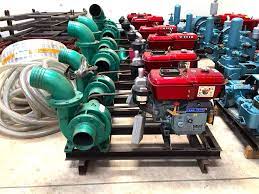
Complete units of JD diesel water pumps by Grekkon Limited
When assembling a JD diesel water pump, use the right steel frame gauge to hold the unit. Ensure that the rubber pulleys joining the engine to the water pump have the right tension
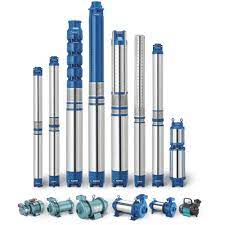
Water Pumps In Kenya
Water pumps in Kenya by Grekkon Limited are varied for different purposes. This provides a wide choice to select from for growers according to irrigation use. Below are water pumps by Grekkon Limited
Water pumps in Kenya
Categorisation
1. By displacement
1.1. Centrifugal pumps work through centrifugal force to drive water that enters the impeller. They use the rotational energy from the spinning impeller to produce hydrodynamic energy
1.2. Positive displacement water pumps use a piston, a diaphragm, or a rotating cog or gear to mechanically move a fixed volume of water through the pump chamber
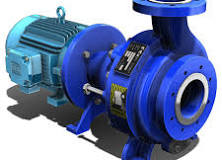
An electric centrifugal water pump
2. By Location
2.1. Surface pumps suck water through an inlet pipe, then pump it out from an outlet pipe. They are set horizontally on dry surface. Theses are; electric surface pumps including booster pumps, solar surface pumps, diesel and petrol generator water pumps

A diesel water pump
2.2. Submersible water pumps work under water in wells. The size and power depends on the well depth, and discharge rate. They are either solar or electric powered

A submersible solar water pump
3. By power output
3.1. Electric motor powered pumps are either electric (AC current), or solar (DC current) water pumps

An electric surface pump
3.2. Generator powered water pumps are either diesel or petrol types. These are available as high pressure, high volume, low pressure and low volume
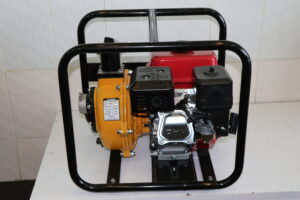
A petrol water pump
Water Pumps In Kenya
What To Consider When Buying Your Water Pump
1. The head/ pressure rating
This is the vertical pumping distance in meters or bars. The higher it is, the higher the pressure needed, and the more powerful is the engine or motor. Fuel engine (generator) or electric motor power is horse power (Hp), or in Kilowatts (kW) for the latter
2. The flow rate
This is the amount of water pumped evacuated per unit time. It is in litres per minute or per hour. The higher it is, the larger the water pump inlet and outlet size
For agricultural use, PVC or HDPE water pipes are connected to these pumps. The pipes evacuate water to the crops
3. The power rating
The motor or engine size provided in kilowatts (kW) for the former, and in horse power (Hp) for the latter determines the water pump’s efficiency. The larger the flow rate and the discharge, so will the engine or motor be
